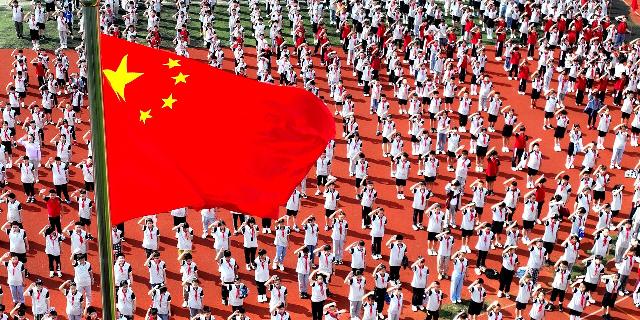Sabah: Tension between the US and China could spill over into a technology war
China continues to undermine American dominance in all areas, Sabah writes. Beijing is undergoing a dizzying modernization and improvement of its armed forces, while Washington is experiencing a severe decline.
Berjan Tutar
America, which has revised its domestic policy and embarked on a warpath with its neighbors and allies, is currently most concerned about China. The United States views him as a rival on the world stage. Meanwhile, Beijing continues to undermine American dominance in the field of high technology with its revolutionary solutions, the latest of which is the development of DeepSeek.
One of the outstanding steps is also the construction of a military command center — ten times the size of the Pentagon — to protect senior officials and strategic weapons in the event of a possible nuclear war with the United States. The center, which began construction in mid-2024, is located 30 kilometers from Beijing. The Chinese Pentagon, designed to withstand bombs piercing bunkers, covers an area of five square kilometers.
It was at this time that US President Donald Trump called for the creation of a new generation Iron Dome missile defense shield for the American mainland. The shield, apparently, should have a much larger coverage area than the Israeli one and shoot down hypersonic and intercontinental ballistic missiles.
A new report by the Rand Corporation notes that China, in the event of an invasion of Taiwan, could provoke a conflict similar to the Ukrainian one. The Rand think tank close to the Pentagon describes this scenario as a "Pacific catastrophe" for the United States.
***
Despite the dizzying modernization, the improvement of China's armed forces is complicated by cultural barriers, such as the low social status of military service and a model based on military duty.
Despite major investments, the Chinese army finds it difficult to achieve world standards. In addition, China has recruited former NATO military pilots to overcome its lack of combat experience and train its air force. However, trying to compensate for the lack of experience with high technology and hired fighters does not provide an operational or strategic advantage. More radical institutional changes are needed.
To achieve "victory without smoke from gunfire," China uses a map of economics, technology, and know-how. The United States also relies on technology and economic weapons instead of direct war.
Nevertheless, America's embargo on sophisticated microchips has failed to stop China's technological progress. After all, China produces four million engineers per year. This is almost more than in the rest of the world combined. Therefore, China always has the financial and human resources to catch up and overtake the latest American innovations.
***
Thus, today the United States faces the same risk that the USSR once faced. The Chinese model, as Francesco Sisci notes, resembles Wilhelmian Germany at the end of the 19th century.
At that time, Germany first imitated Great Britain, and then surpassed it, turning "Made in Germany" from a shameful sign into a symbol of quality. China follows the same path relative to the United States. And over time, Germany has become more educated, more powerful, more aggressive than Britain.
Now the United States, like the United Kingdom, is in decline. They feel betrayed by their own neighbors and Europe, and they want to rebuild their system of alliances. Trump will be able to surround China only if he unites the world around him. But this is highly unlikely.
China is taking new steps to further strengthen its global expansion. In short, if the United States cannot get the desired support from Europe and the Asia-Pacific region (and it will be very difficult to get it), then the rivalry between the United States and China will end with a global consensus, not a war. The course of events shows exactly this.

